- Home
- William Shatner
Spirit of the Horse
Spirit of the Horse Read online
Begin Reading
Table of Contents
About the Authors
Copyright Page
Thank you for buying this
St. Martin’s Press ebook.
To receive special offers, bonus content,
and info on new releases and other great reads,
sign up for our newsletters.
Or visit us online at
us.macmillan.com/newslettersignup
For email updates on William Shatner, click here.
For email updates on Jeff Rovin, click here.
The author and publisher have provided this e-book to you for your personal use only. You may not make this e-book publicly available in any way. Copyright infringement is against the law. If you believe the copy of this e-book you are reading infringes on the author’s copyright, please notify the publisher at: us.macmillanusa.com/piracy.
I would like to dedicate this book to the wonderful animals I worked with, but I also need to mention the horses.
HORSES
All Glory
Beretta
Boston Legal
Call Me Ringo
Chic
Da Vinci
Eleanor Rigby
Lena
Lucy
Natasha
Revival
Sinatra
Sparkle
Spill the Ink
Sultan’s Great Day
Time Machine
Tucker Belle
TRAINERS
Brett Day
Danny Gerardi
Joan Lurie
Raymond & Lillian Shively
INTRODUCTION: THE ZEN OF RISK
Most of us take some kind of risk or other. A new relationship; changing jobs; not studying as hard as we should for an exam; skydiving.
Of course, some of us are a little crazier than others.
If my life were a movie, or a TV series, what I’m about to tell you would be the precipitating event that caused me to look back at how I got here. Sort of like Sunset Boulevard, only without the swimming pool … and I’m also still alive!
Miraculously.
Since you’re reading this book, you’ve already gathered that horses are a huge part of my life. They have been for more than thirty years. Without a doubt, horses are magnificent animals. Since almost everyone has seen one on-screen, or in a stable, or being ridden through city streets by a police officer, or even performing in a rodeo or a circus, you know that already. Perhaps you’ve ridden one. But, as with most sports, there is also an inherent danger when riding.
I want to talk about that for a moment, the appeal of danger to me personally. It comes with the pro forma “Don’t try this at home, kids.”
When I do road races like the celebrity Grand Prix in which everybody is riding a powerful, souped-up vehicle and trying to kill each other—figuratively speaking, of course; it’s more like bumper cars for thrill-seeking adults—I think, at 150 miles an hour, when I’m going into a right-hand turn, “Man, I’m going to lose it here.” In that moment, I am euphoric. I took flying lessons where my opening class was conducted by this military adviser who put the plane in a tail-over-nose, wing-over-wing maneuver. You are, quite literally, tumbling in the air, and I thought, “I’m gonna die.” In 2015, I partnered with American Wrench on TV for a cross-country motorcycle ride to benefit the American Legion. A 2,400-mile journey on a wonderful, custom-built but untested machine. Like a horse, there was a lot of power under my butt. A lot of that employed at high speeds on sharp turns that I wasn’t always sure I could hold. But you never know until you try.
The bottom line is, I’ve been “going to die” at a variety of sports, from riding horses to racing cars. In fact, you drive high-performance cars with your ass, the way you drive a horse. Movement is felt in your butt and communicated to the rest of the body; it tells your arms, legs, and spine what to do and how to move. Which is a roundabout way of saying a good horseman will make a good driver. And vice versa … though, unlike cars, horses have a mind and will of their own and the musculature to enforce both.
We are, after all, talking about animals that can stand up to seventeen hands high—which is over five and a half feet and weigh on average slightly more than half a ton. Animals who are spirited by nature. That’s a lot of strength and temperament to try to overcome. I try—I try hard, try diligently—to do that and am mostly successful. But not always.
The natural reaction of non–horse people, when I talk about some of the horse-riding accidents I’ve had, is, “Bill, why would any sane, reasonable person want to pursue this?” And they have a point. If I’m injured, acting is not something I can easily do from a hospital bed. But when you love something—anything—sanity and practicality are not always your guiding principles.
And I love horses. As the poet says—let me count the ways!
This book was inspired by my desire not only to give my perspective on the excitement of the race and my love of horses, but to share the thoughts and experiences of others. I have selected some of my favorite equine nonfiction and fiction, myth and folktale, prose and verse. While all of these selections stand on their own as entertaining, informative, and/or quaint narratives, I have also written extensively about my own experiences to provide context for them. Together, I hope, these works will illuminate the experiences and joys, setbacks and triumphs of those who spend time in the company of horses.
THE FOUR-LEGGED OLYMPIAN
Horses are Olympic athletes. It’s up to the rider to try to govern that power, that elegance, that perfection, that will. Failing that, failing to merge with and control that power, you’re just a passenger. And a very vulnerable one at that.
I was on a beloved Saddlebred. Saddlebreds are descended from proud, spirited riding stock whose line dates back to the American Revolution. Hence the epithet “the Horse America Made.”
The Saddlebred’s nature is to be highly emotional, highly evolved, with lots of high-energy motion, a high neck—hell, everything about them is high. And it is the job of the rider and the trainer to channel all that energy into whatever performance the horse is supposed to give.
Now, some of these horses have all of those distinctive characteristics, only they are less highly charged. Or maybe they are a little slower for some other reason. As a result, they are sometimes made into Western Pleasure horses, animals known for their generally relaxed demeanor.
This particular horse I was riding was a really good example of that. I had purchased him because he had vital Saddlebred energy, but he didn’t have enough motion in his legs. So I decided to make him into a Western Pleasure horse, because his beauty, and the motion of the legs that he did possess, could have made him a champion of that type, because a Western Pleasure horse has to walk, jog, and lope.
This particular horse was trained for two years by the Kentucky trainers whose job it is to handle these American Saddlebreds, to develop them to their full potential according to their breeding—which is to be show horses.
An essential part of this training is desensitization. This is an ongoing process. The trainer, the rider, both have to be extremely alert to new stimuli, to new and different things every day, at home or on the road. It might be a kind of bird or dog, it might be a crowd.
Think, for just a moment, about police horses and what they have to endure. Their trainers make noises, blow whistles, fire shots, break bottles, bang garbage cans, have people crowding around to make sure the horse is accustomed to these distractions. I saw some footage recently of the O. J. Simpson trial, when the crowd reacted to the jury’s verdict outside the courthouse and the police horses were all lined up in case of trouble. Even with all their training, even with highly experienced police of
ficers on their backs, as soon as the crowd erupted with this elemental shout, all the police horses shied. And several police officers almost came off their horses. For riders, this fundamental desensitization training is essential and very, very serious work.
After that basic desensitizing and training, this one horse eventually came to my Western trainer, Danny Gerardi, who trains all the Quarter Horses I own for reining—which is a sport that we’ll get to later in the book. But the big difference is that reiners don’t need to walk, jog, and lope: they need to gallop hard, slide to a stop, and do 180-degree turns. Fast turns and fast circles—the old, classic cowboy discipline, if you will.
One of the first things that needs to happen in this phase is that they have to be acclimatized in particular to horse shows, because stadiums and arenas, even a simple, ordinary stable, are filled with noise and strange things and beings. So we were at this one particular horse show where—in addition to all of the above—a parade on its way to the stadium goes right past the very stalls that our horses are in. With a little bit of preparation, not a problem. We have to close the stalls up and not let the horses see or hear the marching and floats and bands and the rest of the hubbub on its way to the venue. Understandably, if they get a glimpse of that parade it gets them excited and they start jumping around in their stalls.
So I’m on the back of this magnificent animal, comforting it, refamiliarizing it with me—and my hat blows off. When it comes to horses, you can factor in many things, you can control a bunch of them, but the wind doesn’t fall in either category. Somebody went to pick up the hat and hand it to me. Well, as that is happening my Western Pleasure horse shies and I fall to the ground. I come off the horse. And it’s all right because I wasn’t hurt, just startled. I get back up, I get back on the horse, thinking, “Okay, that hat thing was unexpected.”
If this had happened in a play, that would have been called “foreshadowing.” If this had been a Greek play, Poseidon, the god of horses—more on him, later—would have been stroking his beard and chuckling behind the chorus.
The parade’s done, the coast is clear, I go out, and now I’m riding this horse—walk, jog, and lope. And it’s a very hot day. That’s something you can’t avoid. You react to that, instinctively: I went to wipe the perspiration off my forehead, not even thinking that it would disturb my hat. That inspired my Western Pleasure horse to whirl around so quickly that when I came off the horse—hard, this time—I was driven into the ground so roughly that I broke my leg. I felt it go, knew it at once, and I had to be rushed to the hospital. The only good thing was, I’d fallen enough by then to know how to do it, even though I was older. For example:
I was in competition in Louisville, Kentucky, and a young horse reared on me. Keep in mind, it’s nothing like you see in the movies, where Zorro’s horse Tornado goes back on his rear legs and stays there as Zorro waves at the camera while lightning flashes behind them. Uh-uh. This horse I was on reared and I began to fall over backward. Instinctively, I grabbed the reins to try to recover my seat. Instead, I succeeded in pulling the horse backward with me. Very un-Zorro-like. My initial thought—and you do have time to think, because the seconds slow to a surprising crawl—was that he was going to crush me. That’s almost like having a Volkswagen Beetle roll over on you. (There’s a scene in the film How the West Was Won, during the Cheyenne attack, where a horse and rider fall on an incline and the horse slowly rolls over the stuntman. Some things you just cannot anticipate.)
Anyway, everything is relative, right? I landed very, very hard, but “lucky” for me, in the last instant the horse went down to the side, and all he did was crush my leg. And then he got up, and he was fine, and I went to get up and I wasn’t fine. I got up and I fell right back down.
As I’m lying there, kind of catching my breath and figuring out what to do next, a guy I didn’t even know jumped on me, arms out like he was smothering a fire, and said, “Stay down, we’re calling an ambulance.” And I said, “Don’t call an ambulance, I’ll be okay.” And he said, “You could be bleeding inside.” And I lay back down and said, “Call an ambulance!”
Three good things came out of that accident. This isn’t just a matter of me looking on the bright side of life, which I always try to do; they really were very, very positive.
The first benefit was that I learned how not to fall.
The second benefit was a visit with some wonderfully professional people at the Humana hospital in Louisville. They were very reassuring, in the best tradition of the medical profession, and it wasn’t just because they were treating Captain Kirk. I had the time to watch them interact compassionately with everyone they cared for. I was grateful to hear that while I had some nerve damage it would be all right. And so it was.
The third benefit—speaking of Captain Kirk—is that the lesson of getting up and falling down, getting up and falling down, gave me the insight on how to play the death scene in Star Trek Generations. When the script called for me—him—to be shot in the back and he falls to the ground, I thought, “I’ll just do what I did with the horse. I’ll get up, I’ll fall down, I’ll get up, I’ll fall down.” So that’s what I did. It was very effective. Art imitated life.
That’s a recurring theme in this book. You’re going to hear from some wonderful authors writing about our favorite animals, each of these authors having had different ideas, different experiences with horses.
Tachyhippodamia
by WILLIAM J. POWELL (1872)
I could think of no better selection to begin our literary journey than an excerpt from this vintage guide on horse training. It is a seminal work of its kind.
This wonderful volume bears the ambitious subtitle “GIVING FULL DIRECTIONS [ON] HOW TO BREAK AND RIDE COLTS; TO TAME THE MOST VICIOUS HORSES AND GENTLE THEM TO ALL KINDS OF VEHICLES OR WORK; TO BREAK THEM OF KICKING OR ANY OTHER BAD TRICKS; TO TEACH THEM ANY KINDS OF TRICKS OR ACTIONS; ETC., ETC. WITH NUMEROUS VALUABLE RECEIPTS FOR DISEASES OF HORSES, MULES, COWS, ETC.; HOW TO FATTEN HORSES, COWS, ETC., HOW TO TEACH TURKEYS AND ANIMALS TO DANCE, HOW TO TAME DEER, ETC., ETC.”
As in many works of its time and age, quite a few of the ideas herein have been modified or in some cases discredited. But it seems essential that we start our journey with a look back at what trainers were thinking in less enlightened times.
This work contains material attributed to John Solomon Rarey, himself the author of The Complete Horse Tamer (1862). Rarey is perhaps better known for the reference to him in Nicholas Evans’s bestselling novel The Horse Whisperer (1995).
In Tachyhippodamia—which literally translates to “Rapid Horse Tame”—author Powell states that he first learned of a technique of breaking horses that had been conceived in the eighteenth century, most likely by the famed Irish trainer Daniel Sullivan, and he was determined to re-create and refine this skill. Tachyhippodamia was the result, and the technique can be summed up fairly as approaching the horse calmly so that it won’t be afraid.
By the way, the “Drinnen” the author refers to in the text is Thomas Drinnen, a man whom Powell met in 1815 and of whom he wrote, “[He] appeared to me rather eccentric in some respects, but an active, intelligent man, and very fond of horses.” Changing hats here to another life, I earnestly wish time travel were possible! It would have been wonderful to know men such as these, in a simpler, more rugged time. What fun, without the distraction of ever-present communications and social media, to have ridden the open plains with them!
This is a rather lengthy excerpt, one that I went over time and time again, trying to find something it could do without. I made a few gentle cuts, though each time, I found myself seduced by the innocent charms of its writing and ideas. I mean, “Cause your horse to be put into a small yard, stable or room. If in a stable or room, it ought to be a large one.…”
Who dares to redact advice like that?
OBSERVATIONS UPON HORSES IN GENERAL: AND WHAT LED ME TO THE DISCOVERY OF BREAKING THEM IN A SHORT TIME.
T
he first experiments I made upon wild horses, in order to break them in a shorter time than that usually employed to that end, consisted in the application of different kinds of smells, such as opium, the oil of cumin, assafœtida, that callous substance called the spur which grows upon the inside of a horse’s fore-legs, the sweat from a man’s arm-pit, mare’s milk, &c., &c. Opium has but little effect upon a horse, even if he smells it a considerable time. But of all these substances, no one tends so much to intoxicate, and even sicken, not only a horse but a man, as that taken from the horse when smelled of for any length of time. Any one who may doubt the veracity of what I here assert, can be easily convinced by experience, if he will. In the next place, the sweat from the arm-pit has a tendency to render a horse sleepy, if smelled for an hour or two. Some horses, thus rendered sleepy, can be handled; but on most horses it has no effect, or very little. Now, as I was determined to publish this secret some day or other, in its true light, I never revealed any other till now, but that accompanied with some one of these substances, with certain directions how to apply them. These directions contained enough of the true secret to tame a horse, so as to astonish the most penetrating. Now and then, a horse would remain gentle that had been thus tamed; but five out of ten would become wild again. Whenever I broke one myself, he always remained gentle. Drinnen sincerely thought that some of these substances were necessary to gentle a horse. I solemnly declare, before God and man, that I do not believe that a horse can be tamed, even for a short time, by the application of any of these substances, without applying to him more or less of the true secret; and furthermore: I declare, that all and every one of them are entirely useless, and of no effect. God is my witness, that if ever this secret was known before, I never learnt it from any man; I discovered it myself, and brought it, as I believe, to its greatest perfection.
A horse is gentled, by my secret, in from two to sixteen hours. The time I have most commonly employed, has been from four to six. We all know what pleasure it gives a parrot to have one scratch or rub him upon the head. Now, of the five senses, the sense of feeling possesses something more, as to its influence of materiality, than the other four. It has a similar effect upon animals as upon men. A horse feels a lively pain at the stroke of a whip, or the prick of a pin. He feels a pleasure in being curried, rubbed and handled. It is well known, that an object that frightens a horse, at first sight, will become familiar to him in a short time—even in a few minutes. The same may be said of those sounds which frighten him at first: such as the explosion of a gun or cannon; to all of which he soon becomes familiar, provided they are not accompanied with any thing that operates upon the sense of feeling; but he will never become familiar to the crack of a whip, so as not to be afraid of it, if he has been accustomed to experience its effects, when vigorously applied to his back. To conclude: Take away FEAR—Inspire CONFIDENCE—FAMILIARIZE.

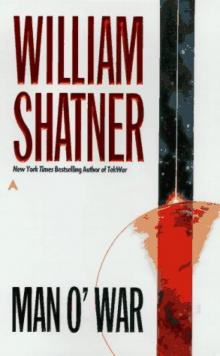 Man O' War
Man O' War Shatner Rules
Shatner Rules Leonard
Leonard Captain's Glory
Captain's Glory Captain's Glory зпвш-9
Captain's Glory зпвш-9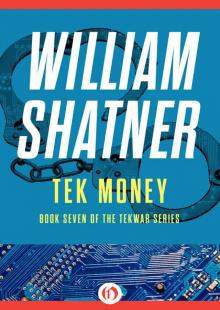 Tek Money
Tek Money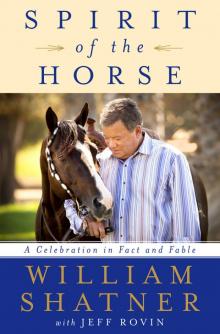 Spirit of the Horse
Spirit of the Horse Tek Vengeance
Tek Vengeance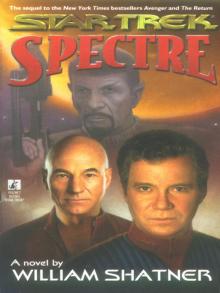 Spectre
Spectre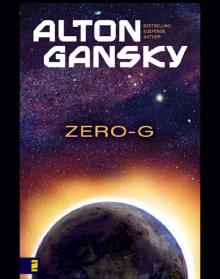 Zero-G
Zero-G Tek Kill
Tek Kill Collision Course
Collision Course TekLab
TekLab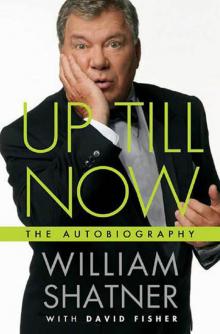 Up Till Now
Up Till Now Captain's Blood
Captain's Blood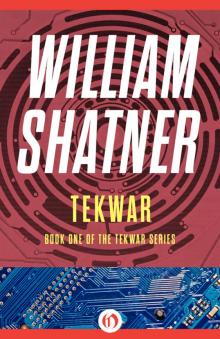 TekWar
TekWar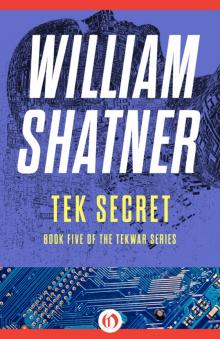 Tek Secret
Tek Secret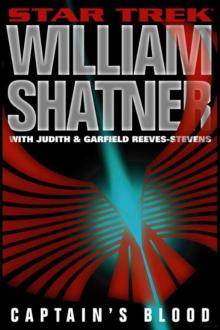 Captain's Blood зпвш-8
Captain's Blood зпвш-8 Captain's Peril
Captain's Peril Live Long and . . .
Live Long and . . .